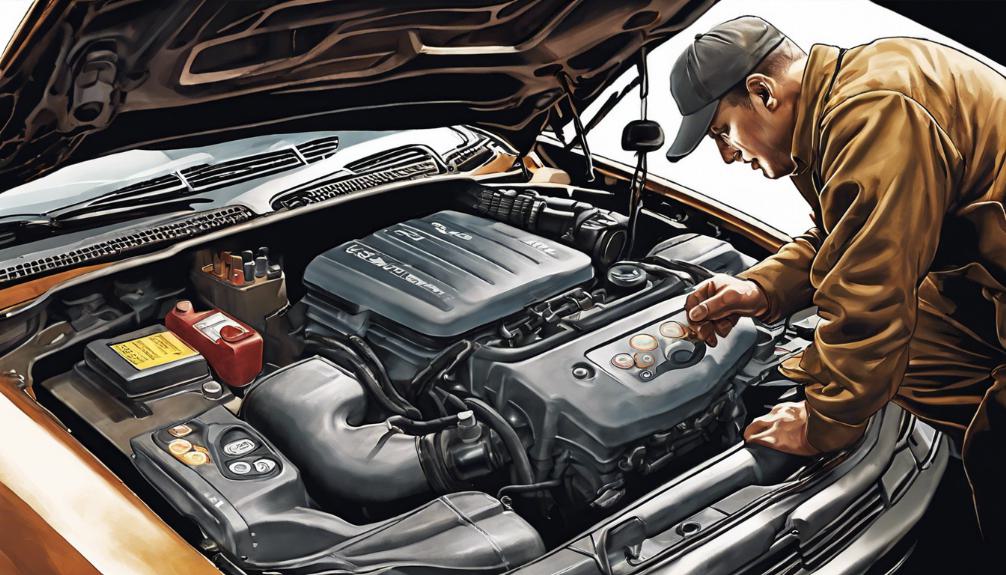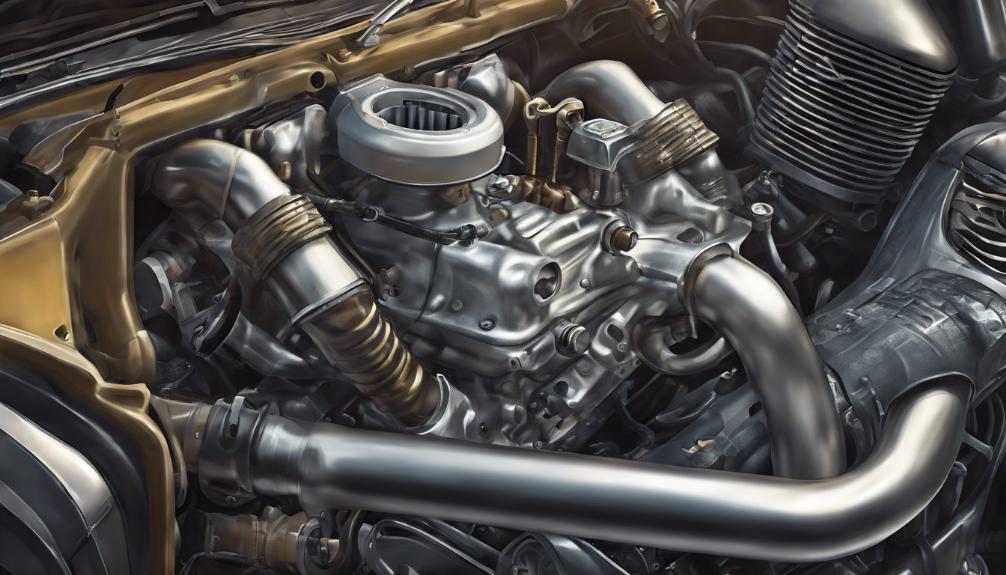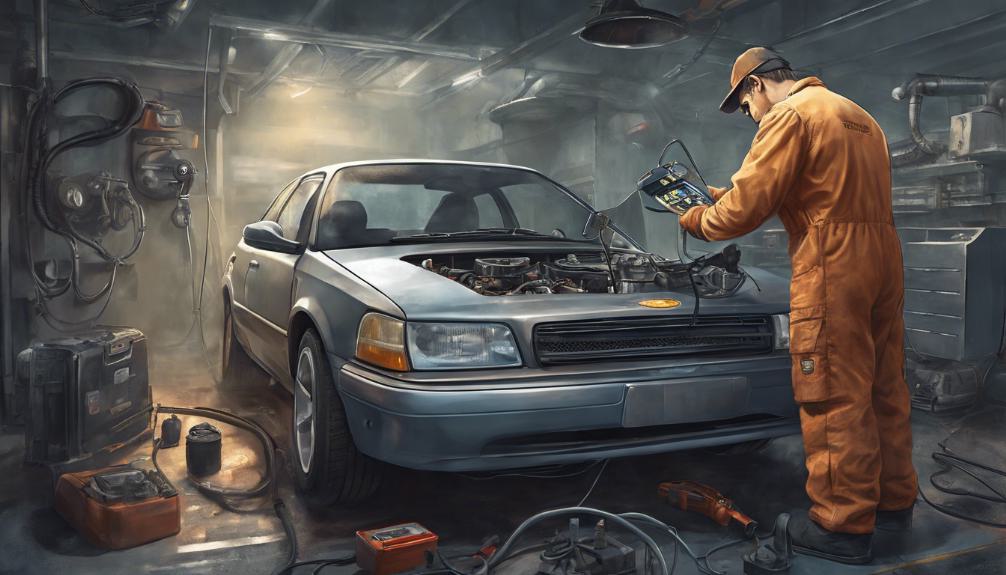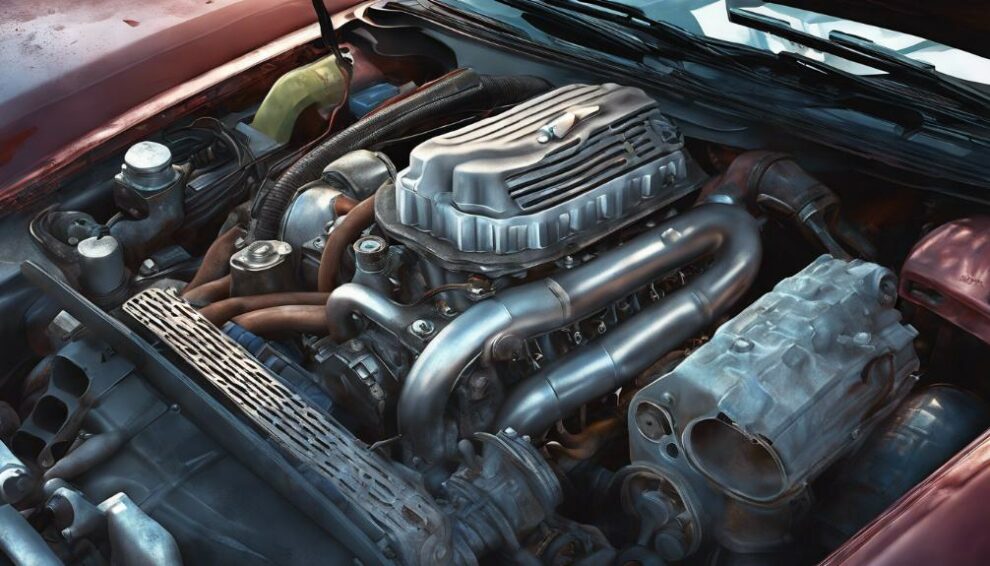If you’re facing a P2004 code due to the Intake Manifold Runner Control being stuck open, start by checking the IMRC actuator for blockages or damage. Inspect the wiring for wear and corrosion.
Symptoms include a lit check engine light and poor acceleration. Consulting a professional is advised. Common causes are a faulty IMRC actuator or issues with the intake system.
Diagnose by visually examining the system, testing solenoids, and checking for vacuum leaks. Understanding related codes like P2005 and P2006 aids in troubleshooting. These steps provide insight into fixing the issue effectively.
What You Need to Know
- Inspect IMRC actuator for physical damage or obstructions
- Check wiring and connectors for wear or corrosion
- Look for intake manifold or linkage issues triggering the code
- Vacuum leaks within the intake system are common causes
- Test IMRC actuator solenoid and runner position sensor for diagnostics
Meaning of P2004 OBD-II Code

Understanding the P2004 OBD-II code is important for diagnosing issues related to the Intake Manifold Runner Control Stuck Open on Bank 1.
When faced with this code, it indicates that the PCM has detected the IMRC actuator on Bank 1 is stuck in the open position. This malfunction can greatly impact your engine’s performance.
To troubleshoot the IMRC actuator, you should first inspect the actuator for any physical damage or obstruction that may be causing it to remain open. Then, checking the wiring and connectors for any signs of wear or corrosion is essential.
Resolving the P2004 error promptly is crucial for optimizing your engine’s performance. A malfunctioning IMRC actuator can lead to reduced power, poor fuel efficiency, and overall subpar engine operation.
By addressing this issue promptly, you can make sure that your engine is running at its best and avoid further complications down the road.
Symptoms of P2004 Error
Inspecting your vehicle for specific symptoms can help identify if the P2004 error code related to the Intake Manifold Runner Control Stuck Open is affecting your engine’s performance.
Common indicators of this issue include an illuminated check engine light, especially at low RPM levels, signaling a problem with the intake manifold runner control.
You may notice poor engine performance, such as sluggish acceleration, which can be a direct result of the IMRC actuator being stuck open on Bank 1.
Another symptom to look out for is reduced fuel economy. If you find yourself filling up more frequently, it could be due to the intake manifold runner control malfunctioning.
To troubleshoot these symptoms effectively, seeking professional diagnosis is recommended.
A reputable shop in your area can accurately identify the cause of the P2004 error, ensuring efficient repair to restore your engine’s peak performance.
Common Causes of P2004

Frequent causes of the P2004 error code include a failed IMRC actuator and issues with the intake manifold or linkage.
When troubleshooting the IMRC actuator, check for signs of physical damage or wear. Confirm the actuator is receiving proper electrical signals and that there are no wiring faults causing communication issues.
Intake manifold repairs are often necessary when dealing with a P2004 fault. Inspect the manifold for cracks, leaks, or any obstruction that may impede the runner control‘s operation.
Addressing any intake manifold issues promptly can help resolve the P2004 error code.
Vacuum leaks within the intake system can also trigger the P2004 fault code. Thoroughly examine all vacuum lines and connections for leaks or damages.
Then, a faulty intake manifold tuning valve could be a culprit behind the P2004 code; consider inspecting and if needed, replacing this component during troubleshooting.
Diagnostic Steps for P2004
To diagnose the P2004 trouble code effectively, start by visually inspecting the intake manifold runner control system for any visible damage or issues. Here are some diagnostic steps you can take:
- Use diagnostic tools like a scanner to check the IMRC actuator solenoid and runner position sensor for proper operation. This will help pinpoint any malfunctions within the system.
- Test the resistance and continuity of all circuits related to the IMRC system using a digital multimeter. This step is vital in identifying any electrical issues that might be causing the problem.
- Conduct a smoke test to identify any vacuum leaks in the intake system that could be contributing to the code. This will help locate any air leaks that need to be addressed for proper functioning.
Once you have completed these steps, you’ll have a better understanding of what might be causing the P2004 trouble code in your vehicle. For repair options and maintenance tips, refer to the next subtopic.
Related Diagnostic Codes to P2004

You can better understand the issues with the IMRC system by familiarizing yourself with related diagnostic codes such as P2005, P2006, and P2007.
P2005 signifies Bank 2 IMRC actuator stuck open, while P2006 indicates Bank 1 IMRC actuator stuck closed. On the other hand, P2007 points to Bank 2 IMRC actuator stuck closed.
These diagnostic trouble codes highlight specific problems concerning the positions of IMRC actuators on different banks of the engine.
Knowing these related codes is essential as they play a significant role in diagnosing and resolving IMRC system issues effectively, especially when dealing with IMRC actuator troubleshooting and engine performance issues.
As an Amazon Associate we earn from qualifying purchases.










